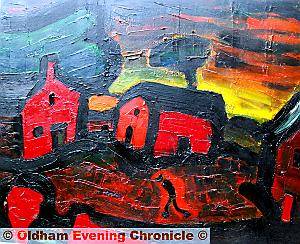Gallery’s Major art coup
Reporter: Richard Hooton
Date published: 05 December 2008
Grant and a gift sees two top works join our collection
CHRISTMAS has come early for Gallery Oldham with two major paintings acquired to boost its collection.
The two works by Theodore Major — described by one critic as among the best English paintings of our time — are courtesy of grant funding and a donation by the artist’s daughter, Mary Major.
A fervent Lancastrian, Major (1908–1999) kept thousands of his pictures from sale, saying he painted for ordinary people, not for profit.
It was said he would have been bigger than the other great North-West industrial artist L.S. Lowry if he had sold paintings during his lifetime.
The Wigan-born artist’s work was exhibited widely alongside artists such as Lowry, Henry Moore and Stanley Spencer in 40s, 50s and 60s and the Arts Council toured his work nationally.
The first painting acquired, Wigan Landscape, is a typical example of Major’s industrial landscape with a solitary figure, hurriedly walking in the dark, illuminated by a flash of light from a sombre and polluted sky.
In contrast, the second painting, Red Farm at Appley Bridge, depicts a more rural landscape which is vivid in colour and shows the clear skies and cleaner air of the post-industrial age.
Wigan Landscape has been acquired through joint funding from charity The Art Fund, which is committed to saving art for everyone to enjoy, and the V&A Grant Fund, established by the Victoria and Albert Museum to help buy art for regional museums.
Red Farm at Appley Bridge has been donated as a gift by the artist’s daughter, who earlier in the year loaned a collection of her father’s paintings for a retrospective exhibition.
Museum manager Stephen Whittle said: “We’re delighted with the paintings, which we’re sure will be very popular with visitors following the great success of the Major exhibition earlier in the year. “Our main collecting focus at Gallery Oldham is British art from the late 18th century to the present day and the paintings will strengthen our collection in this area.
“The fact that the new paintings complement each other is a bonus and will allow us to simultaneously represent two important periods of Major’s work. We look forward to showcasing the pieces alongside each other in the future.”





